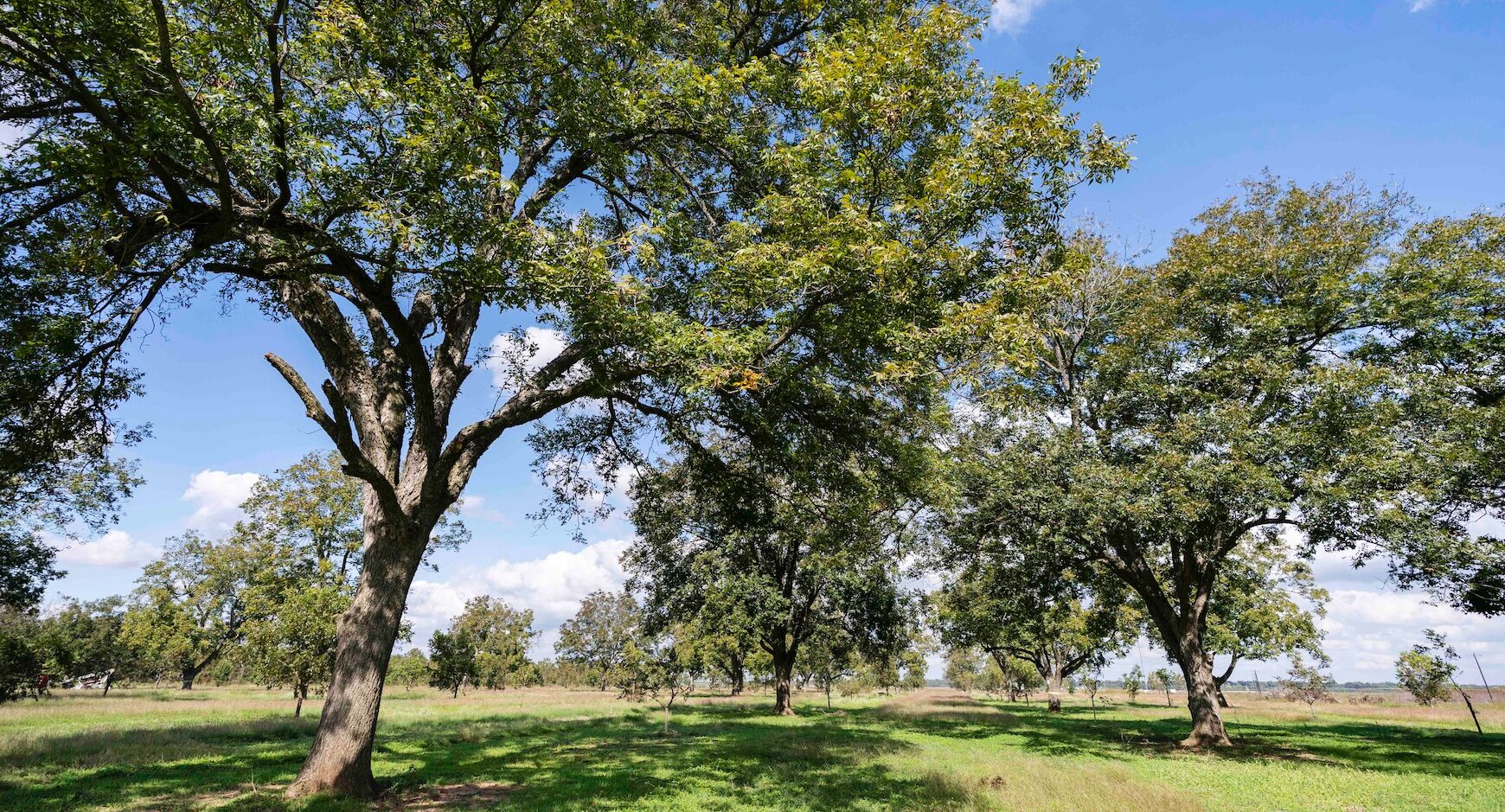Fall is right around the corner, and for many of us that means baking goodies with pecans. Pecans are native to the Southern region of the US, particularly along the Mississippi River flood plain. In 2022, Georgia was the top producer of improved varieties of pecans, contributing almost 43% of the US value of production[1]. Native pecans are a much smaller portion of total US pecan production. Oklahoma was the top producer of native varieties of pecans, contributing 72% of the US value of production1.
Pecan producers, like other agricultural sectors, have been faced with rising input costs in the last 3 years. Pests, diseases, and predation are big challenges in pecan production, and the costs of managing those challenges are forcing producers to make hard management decisions. Native pecan grove owners have been particularly hard hit since their groves also have lower yields as compared to improved pecan varieties. This, along with higher maintenance costs for existing trees, leads to issues for those hoping to draw a profit from their pecan harvest. Higher input costs open producers to greater risks when it comes to price and yield declines. Insurance exists to help cover essential costs should a disaster event happen.
Whether a producer is involved in managing a native pecan grove or an improved pecan orchard, the risks for each can be equally damaging to profitability. Insurance can be combined with disaster programs in many cases in extreme events. There are many risks that affect the health and yield of a pecan operation; however, some of the main factors are listed below:
- Freeze – An early fall freeze prior to shuck split can reduce yields. Shucks may be frozen and incapable of opening to release the pecans.
- Drought – Oklahoma has been in a drought for several years. This can stunt the growth of trees, trigger nut drop, and cause yield reductions for 3-5 years.
- Insects – The pecan weevil and other pests can be controlled with approved pesticides and maintenance practices. View additional fact sheets for more information here.
- Disease – Make sure to spray fungicides at the proper rate and time for maximum effectiveness.
- Predation – Utilize various methods including sound deterrents, trapping, or hunting for multiple species, and make sure to pick up harvested nuts as quickly as possible to reduce loss.
Pecans are considered to be a specialty crop which means they are not eligible for commodity safety net programs like Agricultural Risk Coverage and Price Loss Coverage. Pecan producers are primarily dependent on crop insurance, disaster programs like the Tree Assistance Program (TAP), and more traditional risk management like operation diversification. USDA RMA offers a variety of insurance coverage plans for specialty crop producers. How much insurance a farm will need is determined, in part, by the level of costs that are “essential” in any given year. This will vary widely from farm to farm. An improved pecan farm that does its own processing and sells directly to retail will have quite different risks and costs of production than a native pecan farm selling primarily wholesale.
In Oklahoma, pecans can be insured if the grove or orchard is at least one acre and the insured trees have produced a minimum production, which is: 600 pounds in one of the last 4 years for improved variety pecans in irrigated orchards, and 300 pounds in one of the last 4 years for native pecans or improved variety pecans without irrigation. The Pecan Revenue Insurance product covers unfavorable weather, declines in market prices, irrigation failure, fire, insects, disease, and other acts of God. If you are interested in Pecan Revenue Insurance, ask your neighbors about nearby crop insurance agents that offer that coverage.
Pecan Revenue Insurance can provide a needed safety net in the event of a significant weather event. As shown in the figure, the 2018 drought which was severe for Southwestern pecan producers, in particular, resulted in insurance payouts to help cover production costs. Similarly, Pecan Revenue Insurance meant the difference in paying the bills for producers in Oklahoma that were impacted by drought in 2022. As an example of how the insurance product might work, consider an improved variety pecan operation based in Northeast Oklahoma. Starting with an estimated production cost for 2023 of $1,546 per acre for a producer that has irrigated, improved pecan groves and sells in the premium market. In a year where the weather cooperates and prices are reasonable (not the best but not the worst), the producer might make a net profit of $506/acre. However, what about a drought year that reduces yield by 26% and prices remain around the same level? That producer could experience a 163% reduction in net returns or a net loss of $800 per acre. What if they purchase Pecan Revenue Insurance? In this particular scenario, the producer has a cost of insurance that reduces the net return per acre in a typical year to $369/acre; however, in a drought year, the producer experiences a shallower financial loss (132% reduction in net returns).
Risk management for specialty crop producers has come up in several of the 2023 farm bill listening sessions. Supply chain disruptions and restaurant closures hit the pecan sector in 2020, followed by severe weather events that impacted regional production. It takes years for pecan groves to recover from tree damage or to establish replacement trees. Risk management is individual to a farm, and insurance may play a role in that overall risk management plan. For more information on Pecan Revenue Insurance in your local area, contact your local crop insurance agent.

[1] USDA NASS Pecan Production Report https://downloads.usda.library.cornell.edu/usda-esmis/files/5425kg32f/n5840623x/ww72cn927/pecnpr23.pdf
Hagerman, Amy. “Pecan Risk Management.” Southern Ag Today 3(35.4). August 31, 2023. Permalink

